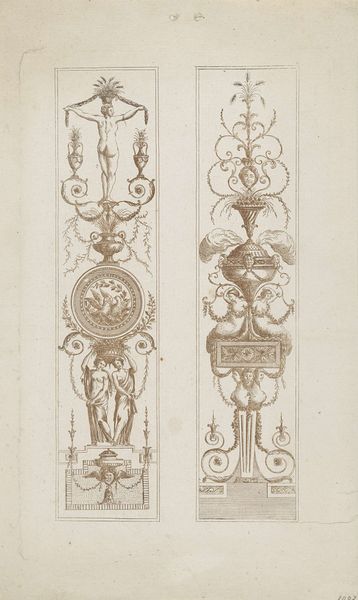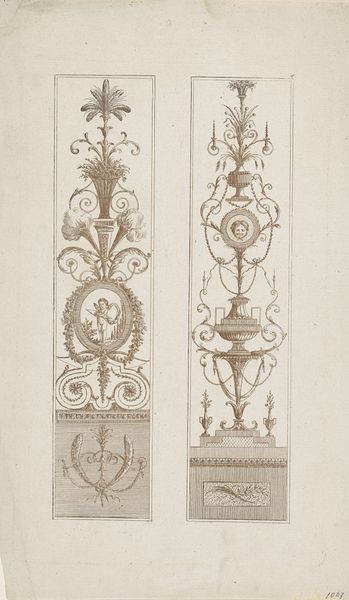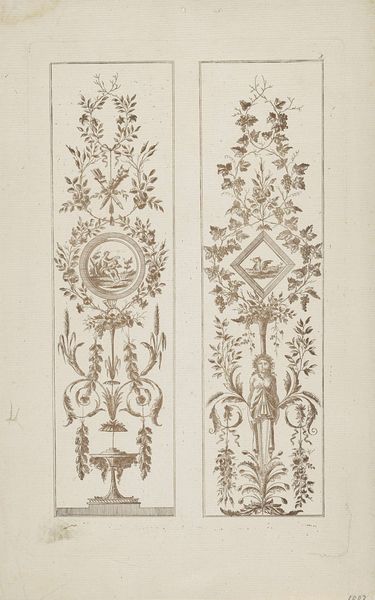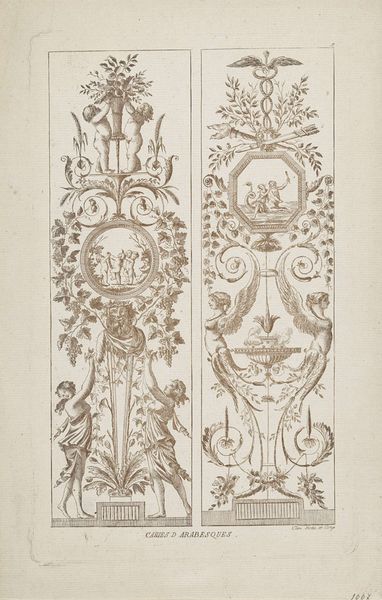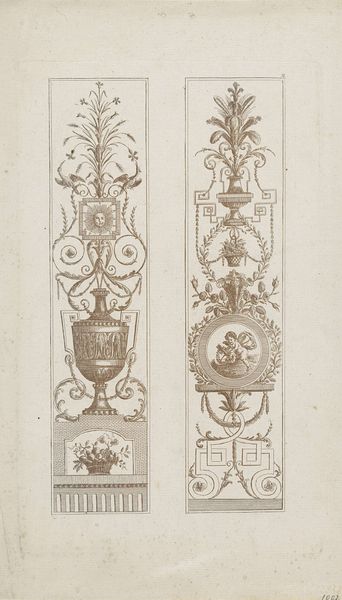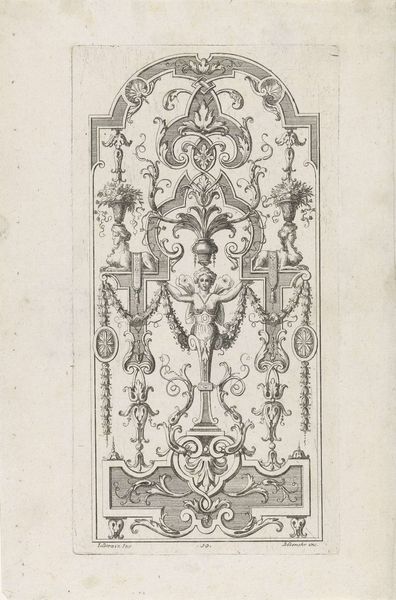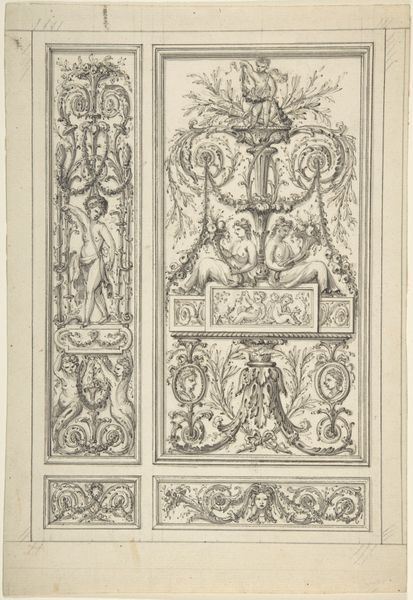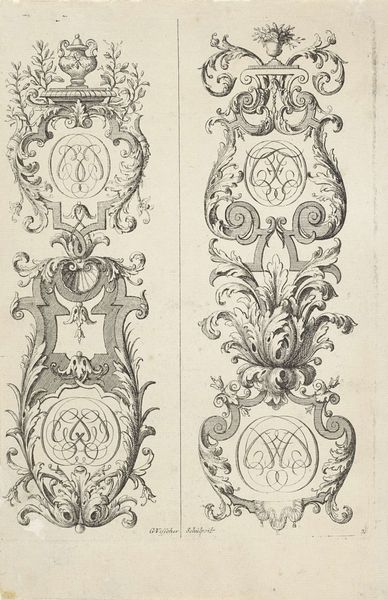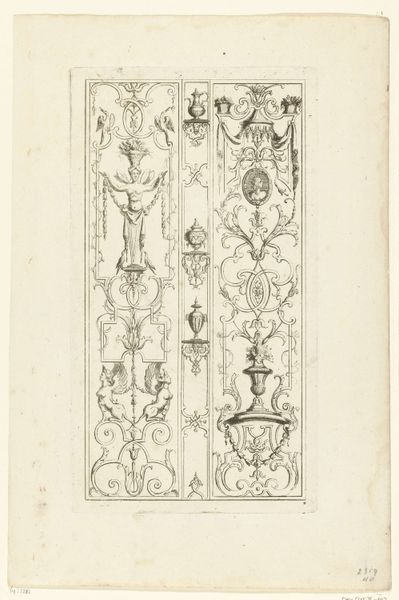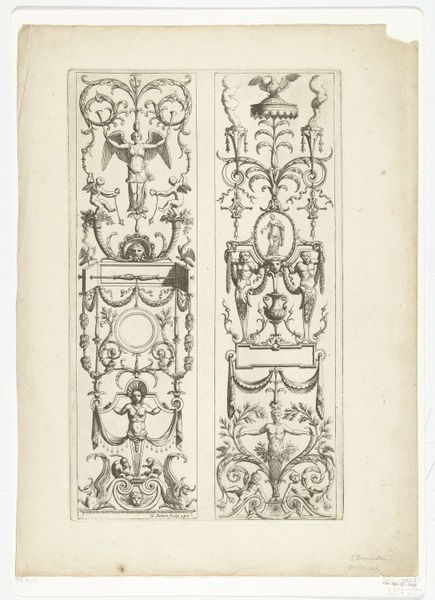
drawing, engraving
#
pencil drawn
#
drawing
#
baroque
#
pencil sketch
#
old engraving style
#
form
#
geometric
#
line
#
decorative-art
#
engraving
Dimensions: height 320 mm, width 199 mm
Copyright: Rijks Museum: Open Domain
Curator: What a delicately rendered piece! The level of detail pulls you right in. Editor: It feels so… organized. Everything in its little compartment. Almost oppressively ornamental. What are we looking at, exactly? Curator: This is “Twee arabesken met muziekinstrumenten en klok,” or "Two arabesques with musical instruments and clock", an engraving likely dating from sometime between 1700 and 1800. It is held here at the Rijksmuseum. It's fascinating how these ornamental prints served as templates, influencing the design of furniture, interiors, and various decorative objects of the time. The act of replicating designs from prints allowed for wider distribution of styles. Editor: Oh, so it’s like… I'm thinking of those design books you can get for tattoos. And the level of intricacy for what is essentially a repeatable design is really striking. There’s the sheet music, a little lyre… all perfectly composed. Who would’ve been making this kind of image, do you think? Was it for mass consumption or specifically tailored towards an aristocratic taste? Curator: The identity of the engraver remains anonymous, which underscores the fascinating aspect of production in that era. While targeted towards the well-to-do, these engravings facilitated the dissemination of baroque and rococo aesthetics amongst a growing merchant class keen to emulate aristocratic taste. Engravings were a relatively efficient means to replicate intricate designs and, more importantly, a way to elevate your standing through imitation. The emphasis here lies on function meeting social aspiration. Editor: Yes, it almost feels like a stage set for… ambition. The clock held aloft by what seems to be a cupid implies time literally supported by… romantic notions? A funny combination. Curator: Quite so! One must remember these objects acted as material embodiments of social positioning as much as practical time-keeping. Editor: Seeing it this way, it seems less an innocent drawing and more a silent weapon in a social game. Curator: A tool to build aspirations, perhaps. That’s a nice thought to hold onto. Editor: Agreed. Thanks, this image really made me rethink the period's "decorative arts".
Comments
No comments
Be the first to comment and join the conversation on the ultimate creative platform.
